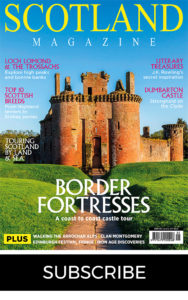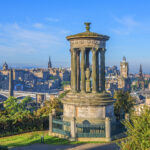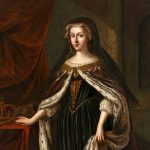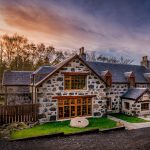MORE FROM SCOTLAND MAGAZINE
King Robert the Bruce: Good King Robert
We speak to Lord Bruce, descendent of King Robert the Bruce, to hear about some of the extraordinary artefacts relating to the legendary king in his anniversary year
Words by Siân Ellis
King Robert the Bruce’s legacy
Charles, Lord Bruce tells a tale of how many years ago, his mother was dusting in the Library. Finding an oak box with a hinged lid, she opened it, unsuspectingly, and “got the fright of her life!” Inside was a skull. In fact, it was the cast of a skull of King Robert I, aka Robert the Bruce, and these days, instead of tucking away such a treasure, the Bruces have it on display in a glass-fronted cabinet in the Dining Room of their Broomhall House family home.
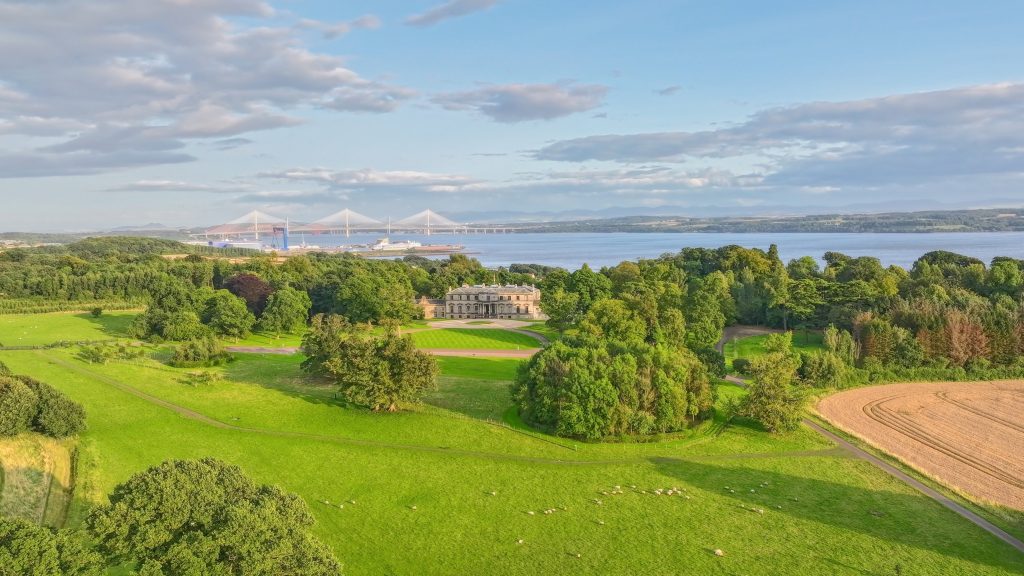
Lord Bruce, who is descended from Robert’s brother, Edward, has many tales to tell and this is a big year for telling them. Lord Bruce’s father, Andrew, 37th Chief of the Name of Bruce, 11th Earl of Elgin and 15th Earl of Kincardine, celebrated his 100th birthday in February. In July it is the 750th anniversary of the birth of their medieval relative King Robert I, whose iconic victory at the Battle of Bannockburn in 1314 and assertion of Scotland’s independence ensured his place in history.
Lord Bruce, who is eldest son and heir to the Earl, believes Robert “would think it wonderful” that 750 years on from his birth (probably at Turnberry Castle, Ayrshire) he is still celebrated. “I think he was very keen to create a legacy,” he says.
Popular history recalls Robert for his clever guerrilla tactics, which Lord Bruce agrees, mark him out: a more unconventional military strategist than William Wallace. He also sees Robert as a complex, nuanced character. His “diplomatic assault on the Papacy” via the Declaration of Arbroath (1320) is just one piece of evidence of “what an enlightened and impressive statesman he was”. Lord Bruce also believes his “endless acts of piety” are a “very indicative of how his mind worked”.
In the turbulent times in which he lived, decisions had to be taken that resulted in terrible consequences, and Lord Bruce believes Robert’s pious acts came from a place of personal faith, even regret, not simply the conduct expected of a medieval king.
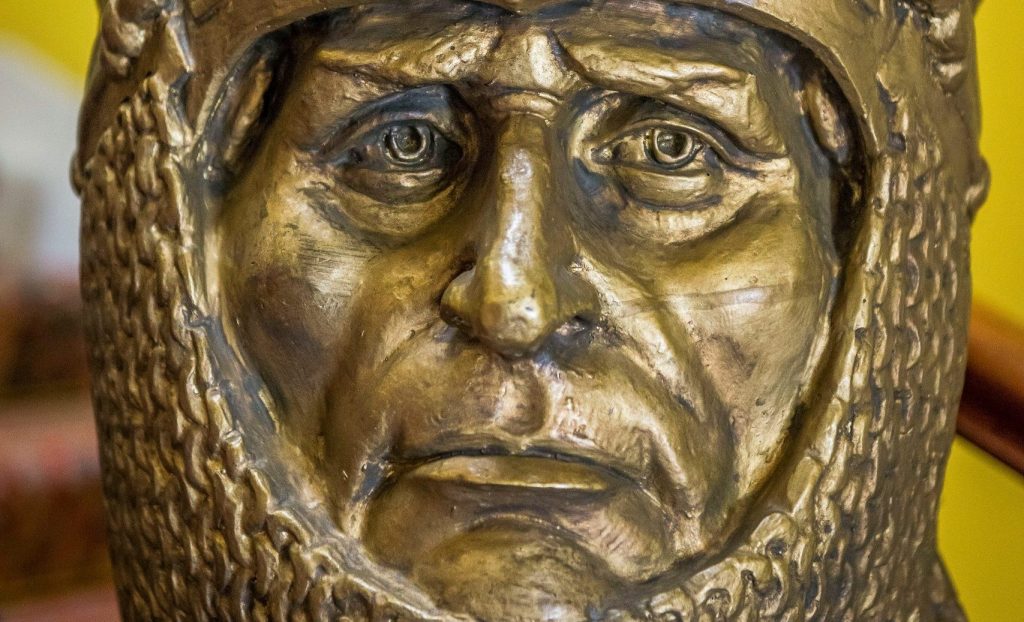
Perhaps, too, King Robert the Bruce might have compared himself with earlier Scottish kings like David I and Alexander III, Lord Bruce suggests, and felt regretful that after his own reign had been almost entirely taken up with warfare, peace with England just a year before he died in 1329 meant “that he clearly wasn’t going to live long enough to achieve many of the things he wanted to achieve”.
If he could be transported back to meet King Robert, what would Lord Bruce say? He tells me he would be keen to tell him that in fact he did succeed in ensuring that his legacy has been greatly cherished by generations of his people, and that he is “still a great subject of interest and curiosity today,” he says.
The Bruce family has acted on many occasions to uphold King Robert’s legacy, not least in 1931 when Lord Bruce’s grandfather Edward, 10th Earl of Elgin, led the successful appeal on behalf of the embryonic National Trust for Scotland to save the historic field of Bannockburn from having council houses built on it. “We have some lamentable occasions in Scotland where we’ve lost really important aspects of our heritage through a sort of absent-mindedness, to put it politely,” Lord Bruce says drily.
King Robert the Bruce’s skull
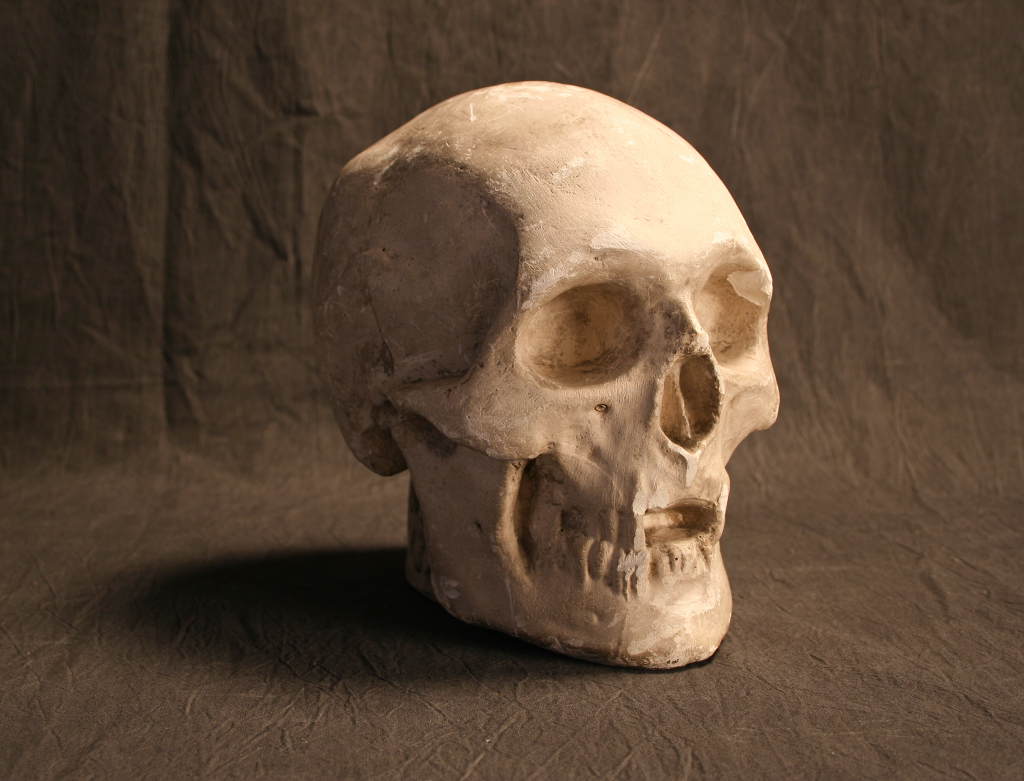
More recently, during the October 2022 visit by HM King Charles III and The Queen Consort to Dunfermline to confer its city status, Lord Bruce gave the royal party a guided tour of King Robert’s tomb at Dunfermline Abbey. This brings us back to the story of the cast of King Robert the Bruce’s skull: one of several created from the mould made of the king’s actual skull when his body was disturbed by workmen at the abbey in 1818.
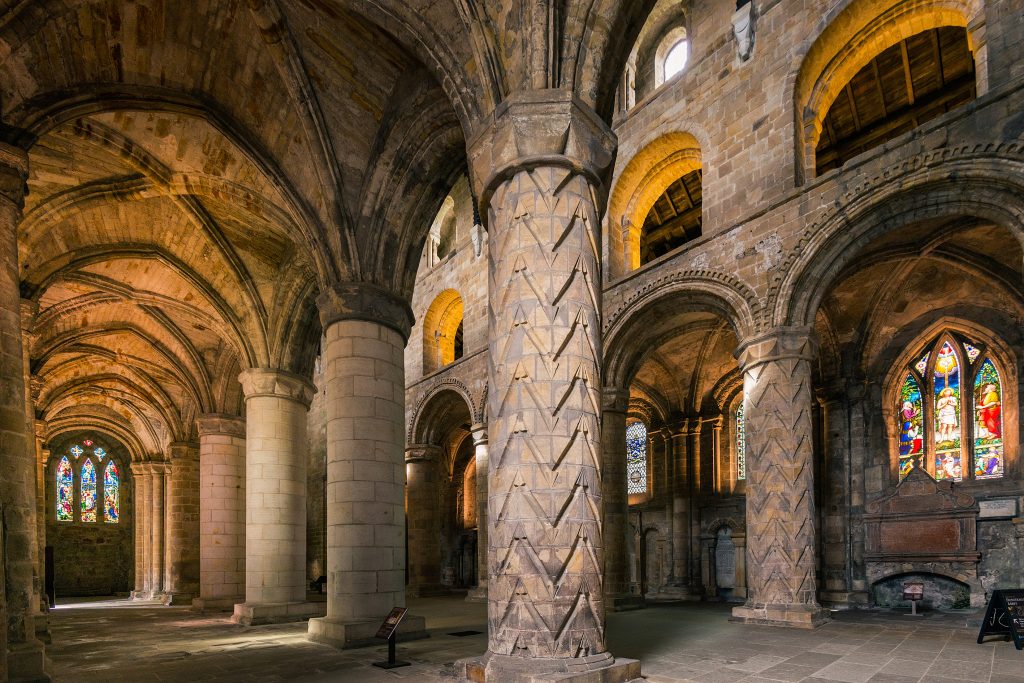
A few years ago, the Bruce family allowed Canadian artist Christian Corbet to use their cast in the creation of a forensic facial reconstruction of King Robert. Now in the collection of the Stirling Smith Art Gallery & Museum, and in contrast to Pilkington Jackson’s helmeted warrior statue at Bannockburn, Corbet’s portrait head is a more intimate rendition of Robert the man. Lord Bruce jokes that he looks “a bit like a nightclub bouncer,” and, more seriously, he reveals that experts involved in the project concluded from studies of the skull that Robert had not suffered from leprosy: a slur “put about probably by his enemies.” He adds: “His face was very badly scarred and damaged, probably from battle.”
King Robert the Bruce’s sword
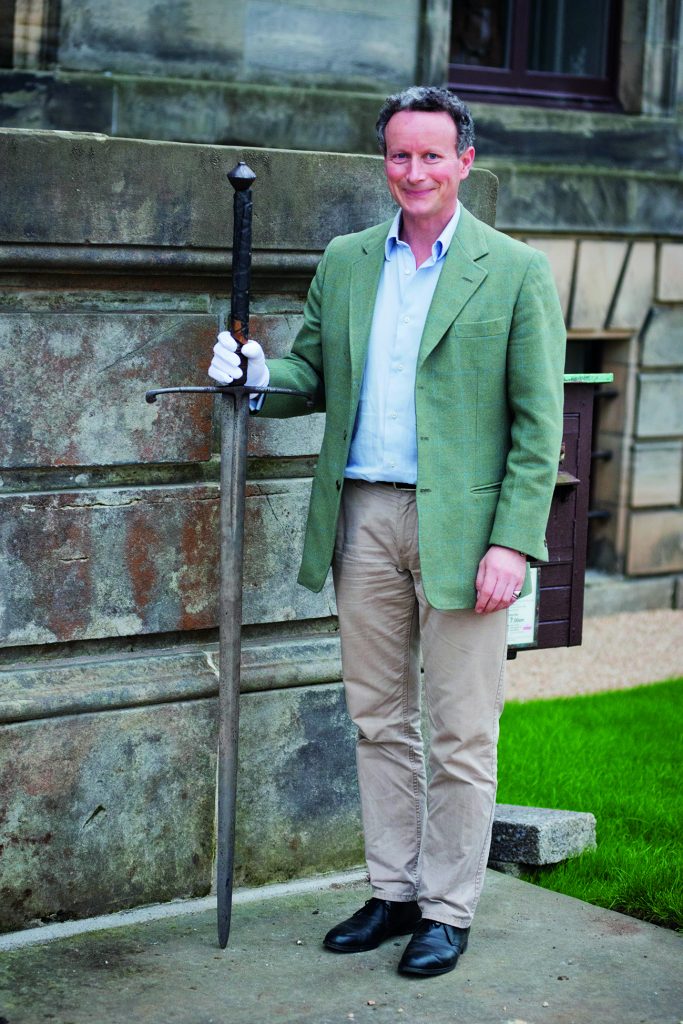
Another highly treasured family artefact, King Robert the Bruce’s magnificent Sword of State, when it is not kept in a safe, is displayed alongside the skull in its cabinet. “We believe the sword was given to our branch of the family by [Robert’s son] David II in the 14th century. It is of very good quality craftsmanship, and we believe that possibly it was German and imported to Scotland. It has beautiful finials but is otherwise quite plain and undecorated, and the blade doesn’t really show any signs of damage in battle. You can hold it in one hand; it is beautifully balanced.”
Early records of how the sword might have been used may be lacking, but in 1787 Katherine Bruce, the elderly widow of Henry, 14th Bruce of Clackmannan, who had fought with Bonnie Prince Charlie, used it to knight a visiting Robert Burns. She said she “had a better right to confer that title than some people” and was given a kiss in return.
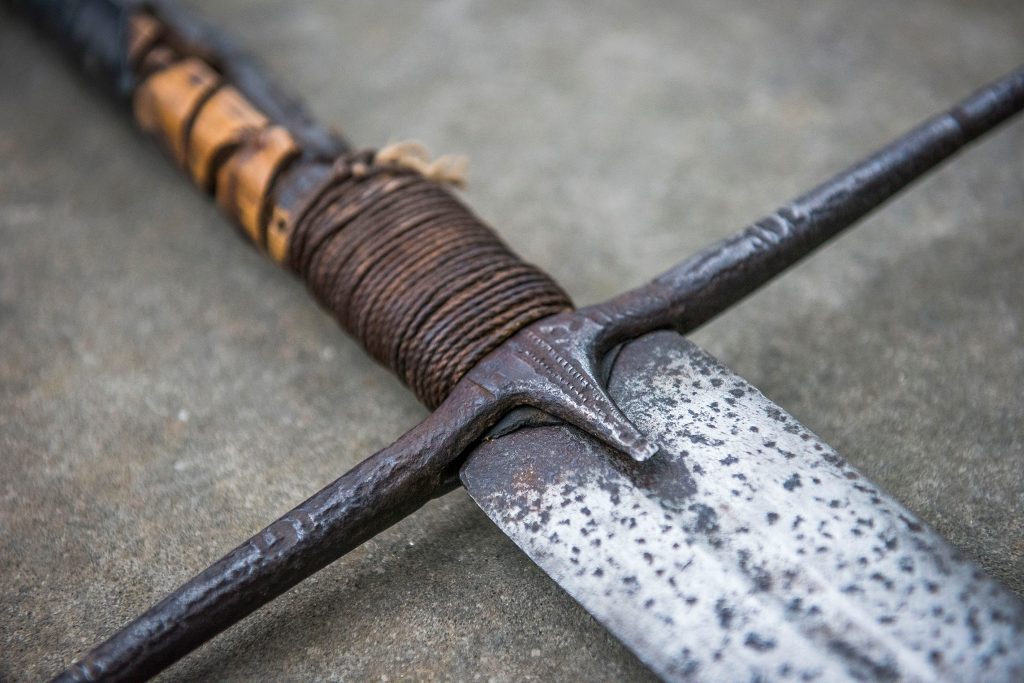
King Robert the Bruce 750th anniversary
Plans at Broomhall for 11 July to mark the anniversary of King Robert the Bruce’s birth were still under discussion when Lord Bruce spoke to Scotland magazine; before that he looks forward to a gathering at Broomhall in June of members from the Family of Bruce International from North America, and to “ensuring they enjoy themselves [and] feel they are here in a really important year”. He is very conscious of Scotland’s global diaspora and the immense energy with which it helps to keep alive clan and family heritage.
Lord Bruce adds, rather modestly, about his family’s role in upholding Robert the Bruce’s legacy: “We don’t look to claim special insight to King Robert. We try and encourage good scholarship and good research. We also encourage reenactors like the Strathleven Artizans [which runs the Robert the Bruce Heritage Centre in Renton, West Dunbartonshire – Ed]… and that sort of connection with the period.”
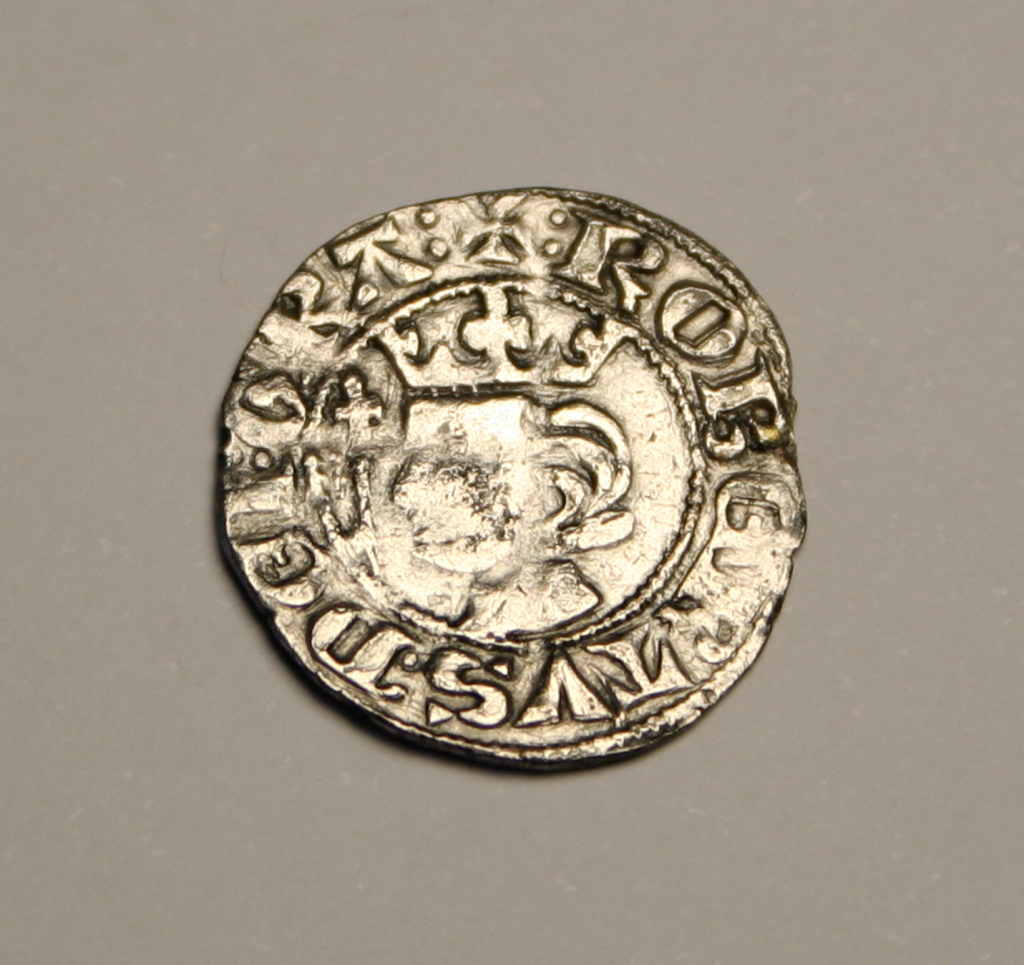
More widely, he embraces his role working with the Standing Council of Scottish Chiefs, and on the ‘Heirs Project’, which “in essence is about our collective responsibility to be good stewards of our heritage and to ensure that there are good hands ready to receive it when we pass it on.” King Robert the Bruce would be pleased at his legacy, 750 years after his birth.
Find out more about Broomhall House at broomhallhouse.com where you can also find announcements about celebration plans closer
to the anniversary in July.
This is an extract. Read the full article in the May/June 2024 issue. Available to buy from Friday 12 April here.
Read more:

SCOTLAND MAGAZINE
Published six times a year, every issue of Scotland showcases its stunning landscapes and natural beauty, and delves deep into Scottish history. From mysterious clans and famous Scots (both past and present), to the hidden histories of the country’s greatest castles and houses, Scotland‘s pages brim with the soul and secrets of the country.
Scotland magazine captures the spirit of this wild and wonderful nation, explores its history and heritage and recommends great places to visit, so you feel at home here, wherever you are in the world.
